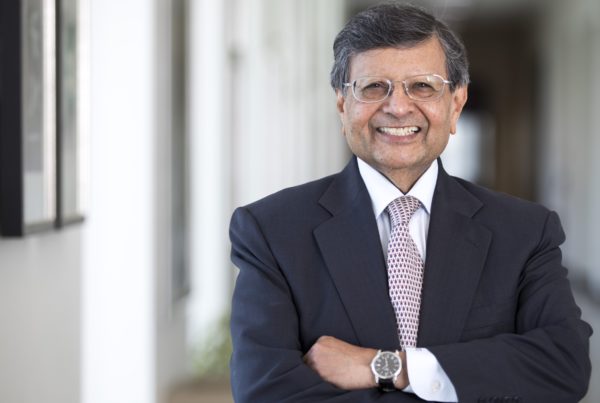Published: Mar 10, 2004 in Knowledge@Emory
Delta Air Lines is no stranger to low altitudes – the Atlanta icon was founded as a crop-dusting company in 1924 – but these days, the ground is getting too close for comfort. After losing millions quarter after quarter, one of the country’s largest and oldest passenger carriers may be running out of room to maneuver.
After reporting the largest negative return on equity of any major airline last year – negative 121% – the airline whose slogan used to be “ready when you are” may soon need to get ready for a date in bankruptcy court. Although Delta’s stock still sits at about $9.80, well off its $6-plus low last year, the once healthy $1.2 billion company faces tremendous challenges.
Many of Delta’s problems are not of the company’s own making, say airline industry experts at Emory University’s Goizueta Business School. The airline business as a whole has suffered terribly in recent years. Between the recession and the fallout from September 11, airline stocks haven’t exactly soared. Even the industry giants aren’t very big: Southwest Air, for example, is only worth $11.7 billion – about $2 billion less than eBay. In fact, the market cap of the entire global airline industry combined is now only $49 billion worldwide, according to Yahoo Finance statistics. To put that in perspective, the beverages in the narrow carts that flight attendants wheel up and down the aisles are worth a lot more money than the airlines: the Coca-Cola Company alone, for instance, is worth $125 billion.
But that’s not to say that all of the airlines are have difficulty coping with this turbulent, unregulated era. The new low-cost airlines such as Southwest, JetBlue and AirTran are all profitable. Their models generally stress low labor costs and simple point-to-point service. But it’s the worst of times for the old network carriers, which typically have a unionized workforce, huge pension liabilities, and the high fixed costs of a hub and spoke system.
Ironically, part of the reason Delta is having a hard time now is because of its past strength. A few of the majors have already gone through bankruptcy and reduced their cost structures, while Delta never had to make that transition, according to Joe Labianca, a professor of organization and management at Goizueta. At the same time, some of its most profitable routes are under attack by the upstart carriers. “That’s a tough combination of competitive pressures to be under,” he says.
The situation is so serious that Fred Reid, the president and chief operating officer of Delta, said in a recent presentation at a Goldman Sachs conference that the industry is now undergoing a “genetic transformation.” He made a point of noting that he no longer makes any distinctions between the traditional and the discount lines. In the future, the airline industry will have only one model, he said. The higher cost position “is simply not an option.”
Labor costs may be the worst of Delta’s problems, according to airline experts at Goizueta. Between 1999 and 2002, salary costs for Delta’s 75,000 workers grew even as revenue has declined. Wages rose from nearly $5 billion in 1999 to $6.17 billion in 2002, even as revenue sank from $14.6 billion to $13.3 billion. Currently, most reports peg Delta pilot’s compensation at about $195,000 a year compared to $112,000 at American and $152,000 at Southwest, according to published report – and pilots at those other airlines reportedly work more hours.
Labianca, who also teaches negotiation at Goizueta, says that the negotiators for the pilots are in a tough position. If they refuse to make cuts, the company will be pushed into bankruptcy, and bankruptcy judges have tended to be tough on pilots in similar circumstances, according to Labianca. But if they give in to the huge cuts that most analysts agree need to be made, the rank and file would be likely to reject the offer.
About the only strategy available to the pilots’ negotiators is the one they currently seem to be pursuing, Labianca says – stalling for time. “I think what they’re trying to do is to drag it out as long as they can in the hopes that the economy will pick up and that air traffic picks up, and the airlines’ fortunes pick up so there will be less pressure on them,” he observes.
Although only 20% of Delta employees are unionized, labor costs are likely to remain a huge difficulty for Delta, even if the pilots agree to the 31% pay cut that management has requested. David Wessels, a professor of finance at Goizueta, says that although most Delta employees don’t belong to a union, the threat of unionization kept Delta’s wages at a union-like scale in the past. Now many of those wages are unsustainable, and Delta management is faced with the difficult task of cutting salaries drastically.
The reason Delta faces this crisis now, says Wessels, is not mismanagement but competition. “The industry’s changed such that there are competitors out there that pay their employees less,” he explains.
But while paying their employees less may be a necessity, paying their executives less may not be an option. Professors agree that the media reports about senior executive bonuses, and their move to fund an unsinkable retirement trust for 35 senior executives –one that will stay afloat even if the company declares bankruptcy — probably did not help recently departed CEO Leo Mullin’s case for austerity. But Wessels says that it would be difficult for the company to attract strong executives if they didn’t pay competitive salaries.
“The bottom line is, if you want to attract good talent at the top manager level, how are you going to convince them to move from General Electric or Home Depot or Coca-Cola, to drop what they’re doing at these other firms and come work for Delta? If you say, `well, we don’t want you to take any salary for the next few years because we’re really struggling. We’d love to have you come over from Home Depot and work for us for nothing,’ attracting people is going to be difficult.”
But the challenges for Delta’s new CEO, Gerald Grinstein, don’t end there. The airline now has nearly $5 billion in outstanding, un-funded pension liability, one of the deepest pension holes in the industry. According to Airline Finance News statistics, Delta’s pension plan went from being $1.1 billion over-funded in 2000, to a $4.6 billion shortfall in 2003.
Low interest rates are partly to blame for Delta’s huge reversal of fortune in its pension funding, according to Stephen Brown, a professor of accounting at Goizueta. For employers that give employees defined benefit plans, low interest rates increase the amount of money the employer is required to deposit now in order to be able to fund the payment of the promised benefit in 20 or 25 years’ time.
“If you’re discounting at 8%, a half-million dollar liability that’s due in 20 years’ time doesn’t look very big. If you discount at only 3% or 4%, then it starts looking pretty horrendous,” he notes. Brown estimates that a decline in the interest rate of 1% now increases the pension liability by approximately 20%.
Beyond paying for salaries and benefits, Delta may face another structural challenge: its hub and spoke system. Here, says Wessels, the right answer may not be as clear cut. Most of the upstarts are point-to-point airlines, and this has been seen as a cost advantage. “The problems of the hub is that you have a tons of employees in the hub and they only work two hours on and two hours off. You have to land all your planes at the same time. You need the people to handle these huge inflows of aircraft. And then after these aircraft have taken off again, then you have a two-hour break before the next inflow of aircraft come in,” Wessels explains.
Point-to-point airlines, on the other hand, can keep their staffs consistently busier, with rapid turnarounds of the same planes. But as the upstarts run out of profitable, high-volume routes in which to expand, Wessels says, it’s unclear whether they will be able to sustain that cost advantage if they need to grow in smaller markets, since the hub-and-spoke may be the most cost-efficient way to serve those communities. “The jury’s still out on that,” he says.
Delta is competing against the point-to-point airlines through a new subsidiary discount carrier, Song. But Wessels is unconvinced about whether Song has any long-term advantages. “The problem with Song is that being a low-price airline does not mean that you’re a low-cost airline,” he says. “And Delta needs to figure out how to make Song a low-cost airline if they want to do point-to-point service and compete against AirTran and JetBlue. I’m not sure they’ve figured that out yet, because they’re using a lot of the same personnel and the same cost structure.” (Apparently executives at Delta agree: the company announced last week that Song’s expansion would be put on hold, pending a review.)
Beyond cutting wages, the current environment for airlines makes pinpointing a successful strategy for Delta difficult. Marketing professor and corporate strategist Jagdish Sheth says that in general the old airlines have several options: cutting back on their networks to reduce service to only their most consistently profitable routes; becoming less vertically integrated, and outsourcing services such as maintenance; or going into Chapter 11 to restructure current agreements. He also suggests that the airlines as a group might want to consider reducing their frequent flier liability by creating a joint system, in much the same way that bank cards took off as the global Visa and Mastercard networks grew.
Curiously, Delta’s stock price is a third up from its year’s low – about $9.58, not the typical valuation for a company in such grim financial shape. Part of this may be a reflection of the fact that although the company is over $20 billion in debt, it does hold $2.7 billion in cash. Although Standard & Poor’s downgraded the company’s debt from B+ to BB- in January, S&P analysts did note that the cash gave the company satisfactory liquidity “for the near term.”
Another finance professor, Jeff Busse, says that he believes investors are anticipating improved conditions for the company now that the economy is growing again, and since air travel is a very cyclical business. At the same time, Busse notes that investors may be discounting the prospect of bankruptcy, simply because most of the major airlines have had to deal with the threat of bankruptcy for so long.
Wessels agrees that the market hasn’t given up on the airline. “I don’t think the market is writing off Delta,” he says. “The market still has some faith in the company.” Wessels views Delta as kind of the John Edwards of the airline industry: a long-shot candidate that may have a chance – at least if the other guy stumbles.





